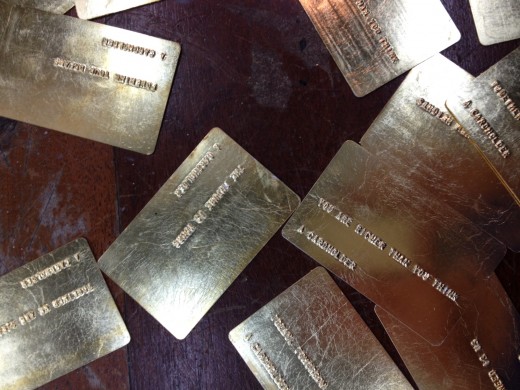Julie Hill: A Rake’s Progress
Amanda Sanfilippo
Installation view: Julie Hill, A Rake's Progress. Photo courtesy of author.
Dimensions Variable
100 NE 11th Street, Miami FL 33132
September 7 – October 20, 2012
A Rake’s Progress is the inaugural exhibition of London-based artist Julie Hill at the new site of Dimensions Variable, the studio and exhibition platform launched in 2009 by Miami-based artists Adler Guerrier, Leyden Rodriguez-Casanova, and Frances Trombly.
The exhibition in the new location—a vast, derelict warehouse in downtown Miami—generates meaning from its component parts as much as the space it inhabits, taking advantage of the physical traces of its former commercial tenant to fabricate a new story of industrially-scaled misadventure. Functioning as a living tableau a la Mike Nelson, the project offers a scenario as much as discreet objects for consideration. The objects in the room subtly inhabit the enormous space by mimicking the confusion of hasty evacuation and abandonment: strewn business envelopes, some jaggedly ripped open, have unceremoniously fallen to the floor lie in listless mounds and form gentle sweeping piles, the edges of the multiple envelopes ruffling out like the folds of an Elizabethan collar. These are joined by a multitude of gilded credit cards splattered on tabletops. Upon closer inspection, each card has been covered in gold leaf, accentuating embossed text. Yet instead of displaying names of cardholders, each bears a unique phrase: “POWERING YOUR DREAMS” and “YOU ARE RICHER THAN YOU THINK.” Lastly, a lesser number of silver-plate etchings read as official business documents telling a bureaucratic tale of an individual’s financial downfall as the result of a series of large lines of credit from a company called Rakewell Capital.

Detail: Julie Hill, A Rake’s Progress. Photo courtesy of author.
It is these last components that shift the project from a site determined/conditioned work to a situation which extends into real systems and engages in feedback with them. This strategy of open experimental economics employed by Hill reads as poetic and studied, as opposed to the more aggressive and functional projects by such contemporaries as the Copenhagen-based collaborative Superflex or the Bruce High Quality Foundation. Yet the tentacles Hill sends into reality do the main job of churning up issues of authenticity to call the bluff: what is the implication of mounting a hoax that is, for all intents and purposes, real?










